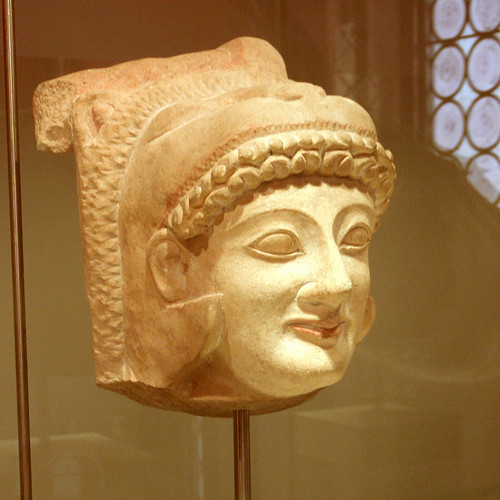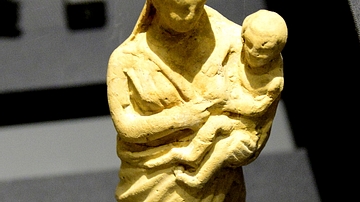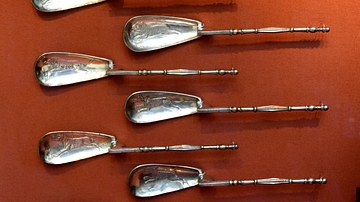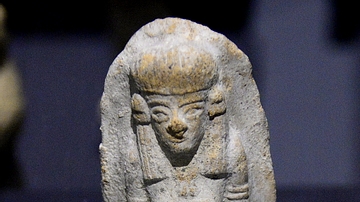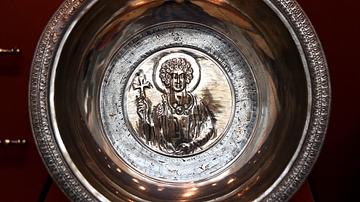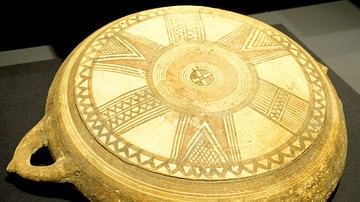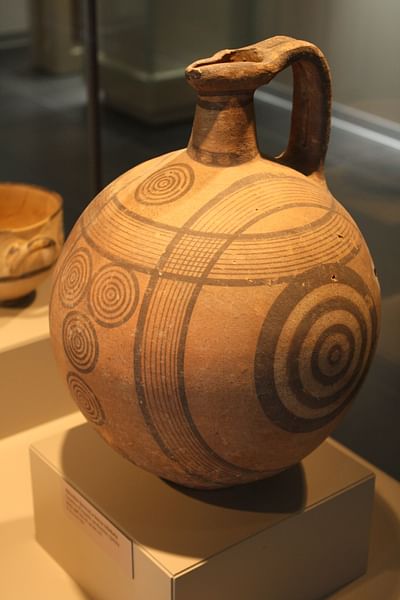
Cyprus is a large island located in the eastern Mediterranean Sea, east of Greece, south of Asia Minor, west of the Levant, and north of Egypt. The naming of the island is a matter of dispute amongst historians. One theory suggests that the large quantity of copper deposits on the island gave the name Cyprus, as copper has the Latin name of cuprum (the Latin symbol is Cu). Another theory is based on mythology: It proposes that the name was given by the goddess Aphrodite (also known as Kyprida) who was born on the island.
Cyprus has always had strategic importance. It was a must-have strategic point for all major powers at different times. The island was occupied by the Assyrians, the Egyptians, the Persians, the Rashidun and Umayyad Arab Caliphates, the Lusignans, the Venetians, the Crusaders, the English, and finally the Ottomans.
Stone Age Cyprus
The first human presence on the island dates back to 7000 BCE. There were two important Neolithic villages on the island, both near the modern town of Limassol: Khirokitia and Kalavasos. Khirokitia had approximately 3000 to 4000 residents, and it was the first location on the island to create a strong community with houses and social organization. At the end of the Neolithic era (c. 3900 BCE), a group of settlers from Palestine came to the island, attracted by the copper deposits.
From 3900 BCE to 2500 BCE, the Cypriots started working with copper and the island started rising as an economic force in the Mediterranean. During this time, there was profound interaction with the Egyptians, especially in art and the use of hieroglyphics by many Cypriot kings.
Bronze Age Cyprus
The Bronze Age (c. 2500 BCE to 1050 BCE), was both a time of growth and foreign occupation for Cyprus. After the end of the war with Troy and due to the Dorian invasion in Greece, the Mycenaean Greeks started permanently settling on the island (c. 1100 BCE). There were ten coastal Mycenaean kingdoms on the island. It was then that the Cypriots started feeling more Greek and adopted the Greek language and religion.
The Cypriot Archaic Era (c. 750 BCE to 475 BCE) was a problematic time for the island's inhabitants, as the Assyrians, Egyptians, and Persians succeeded one another as rulers of the island. Around 709 BCE Sargon II of Assyria extorted submission taxes from Cyprus in exchange for the island's independence. By 699 BCE the Assyrians were involved in other conflicts and had to leave Cyprus. Pharaoh Amasis of Egypt used the same policy as the Assyrians, when he claimed to be ruler of the island, around 560 BCE.
Classical Cyprus
Full occupation of the island came with the Persians, around 546 BCE. The Persians came to the island in a peculiar way. When they heard that King Cyrus of Persia was heading west, the Cypriot kings sent him a message, surrendered their kingdoms to him, and even agreed to supply him with military forces in order to aid his conquest of Caria. Cyrus accepted the offer and in return allowed the Cypriots to mint their own coins and have their own leadership, but he also sent military troops and settlers to Cyprus in order to control the island and the Eastern Mediterranean.
The Persians remained on the island until Alexander the Great conquered the Persian Empire and in doing so freed the island again. After Alexander's death in 323 BCE, the island became part of the Ptolemaic Empire during the Hellenistic Period.
After the death of Alexander the Great, Cyprus passed on to the Ptolemaic rule. Still under Greek influence, Cyprus gained full access to the Greek culture and thus became fully hellenised.
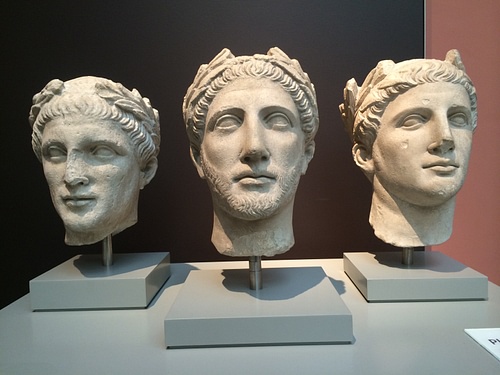
Roman Cyprus
When the Romans became the largest power in the Meditteranean, Cyprus became their focus for various reasons. It became a Roman province in 58 BCE, when Marcus Cato took control of the island. Cyprus suffered under Roman rule, along with bad management and severe taxes. The island also suffered great losses during the Kitos War (also known as the Second Jewish-Roman War) of 115-117 CE. The Jewish leader Artemion killed many Cypriots (reportedly up to 240,000), until he was defeated by a Roman army in 117 CE. Subsequently, the Roman government passed laws banning Jews from the island.
The apostles Paul and Varnavas, along with the evangelist Marcus came to Cyprus and spread Christianity among the Cypriots. Τhe Cypriots accepted the new religion, and because the Church of Cyprus was founded by Apostles, the Cypriot church had and still has the right to have her own Archbishop – autokefalus.
After the division of the Roman Empire into eastern and a western halves, Cyprus came under the rule of the Eastern Roman Empire (also known as the Byzantine Empire).The Byzantine Emperors paid much attention to Cyprus, due to its vital position in the empire.
Alas, Cyprus' position once more proved to be a curse for the island: The Arabs, in their strategy of encircling the Byzantine Empire, started invading Cyprus, first in 648/9 CE, when Emir Moabia invaded and destroyed the city of Constantia (the capital of Cyprus at the time). The same thing happend in 653, 743, 806, and finally 911 CE, until Emperor Nikephoros II Phokas reconquered Cyprus for the Byzantine Empire (944-966 CE).

